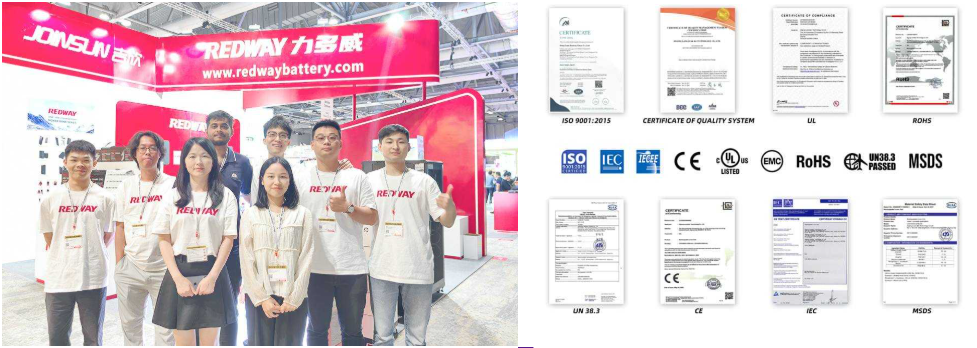What is the Minimum Voltage for a 48V LiFePO4 Battery?
The minimum voltage for a?48V LiFePO4 battery?is crucial for ensuring optimal performance and longevity. Typically, this minimum voltage is around?40V?when fully discharged. Understanding this threshold helps users avoid damaging their batteries and ensures they operate efficiently within their intended applications.
What is the nominal voltage of a 48V LiFePO4 battery?
The nominal voltage of a?48V LiFePO4 battery?is generally?51.2V. This value represents the average operating voltage when the battery is neither fully charged nor fully discharged. It is important to consider this when designing systems that incorporate such batteries, as it affects compatibility with other components.Chart: Voltage Specifications for 48V LiFePO4 Batteries
| Specification | Value |
|---|---|
| Nominal Voltage | 51.2V |
| Fully Charged Voltage | 58.4V |
| Minimum Discharge Voltage | 40V |
What are the charging and discharging voltage ranges for LiFePO4 batteries?
For?LiFePO4 batteries, the charging and discharging voltages are as follows:
- Charging Voltage Range: Typically between?56.8V to 58.4V.
- Discharging Voltage Range: Should not go below?40V?to prevent damage.
Maintaining these ranges ensures that the battery operates effectively without compromising its lifespan.
Why is minimum voltage important for battery health?
The minimum voltage threshold is critical because:
- Battery Protection: Discharging below this level can lead to irreversible damage, reducing capacity and lifespan.
- Performance Stability: Operating within specified voltage limits ensures consistent performance and reliability.
- Safety Concerns: Over-discharging can lead to safety hazards, including overheating or potential failure.
What is the typical voltage range for a 48V LiFePO4 battery?
The typical operating range for a?48V LiFePO4 battery?during normal use includes:
- Fully Charged: Approximately?58.4V
- Nominal Operating Range: Around?51.2V
- Minimum Discharge Level: No lower than?40V
This range ensures optimal performance while protecting against damage from over-discharge.
How does the voltage affect battery performance?
Voltage directly impacts various aspects of battery performance:
- Power Output: Higher voltages generally allow for greater power delivery to connected devices.
- Efficiency: Operating at nominal voltages maximizes efficiency, reducing energy losses during discharge.
- Compatibility: Ensuring that your system components match the battery’s voltage specifications prevents operational issues.
What are the implications of exceeding minimum voltage?
Exceeding the minimum discharge voltage can have several implications:
- Increased Lifespan: Maintaining higher discharge levels helps preserve capacity over time.
- Improved Performance: Operating above minimum thresholds ensures better responsiveness and efficiency.
- Battery Health: Regularly discharging below recommended levels can lead to permanent capacity loss.
What factors influence the voltage of a LiFePO4 battery?
Several factors influence the operational voltage of a?LiFePO4 battery, including:
- Temperature: Extreme temperatures can affect both charging and discharging voltages.
- Load Conditions: The amount of current drawn from or supplied to the battery influences its effective operating voltage.
- State of Charge (SoC): The current charge level directly correlates with operational voltages; as charge decreases, so does available output.
Expert Views
“Understanding the minimum and maximum voltages of your?LiFePO4 battery?is essential for maintaining its health and achieving optimal performance,” states Dr. Emily Chen, an expert in energy storage solutions. “By adhering to recommended thresholds, users can significantly extend their batteries’ lifespans while ensuring safety and reliability.”
FAQ Section
What happens if I discharge my 48V LiFePO4 battery below 40V?
Discharging below this threshold can lead to permanent damage and reduced capacity.
Can I charge my 48V LiFePO4 battery at any time?
Yes, but it’s best to charge before reaching low states of discharge to maintain health.
How do I know if my battery needs replacing?
Signs iclude reduced capacity, inability to hold charge, or frequent over-discharging warnings.
Know More
How to Choose the Right 48V LiFePO4 Server Rack Battery
How to Choose a LiFePO4 Battery
How Big of a LiFePO4 Battery Do I Need?
What is the Minimum Voltage for a 48V LiFePO4 Battery?



